Your ads are dying: How to spot and stop creative fatigue before it tanks performance
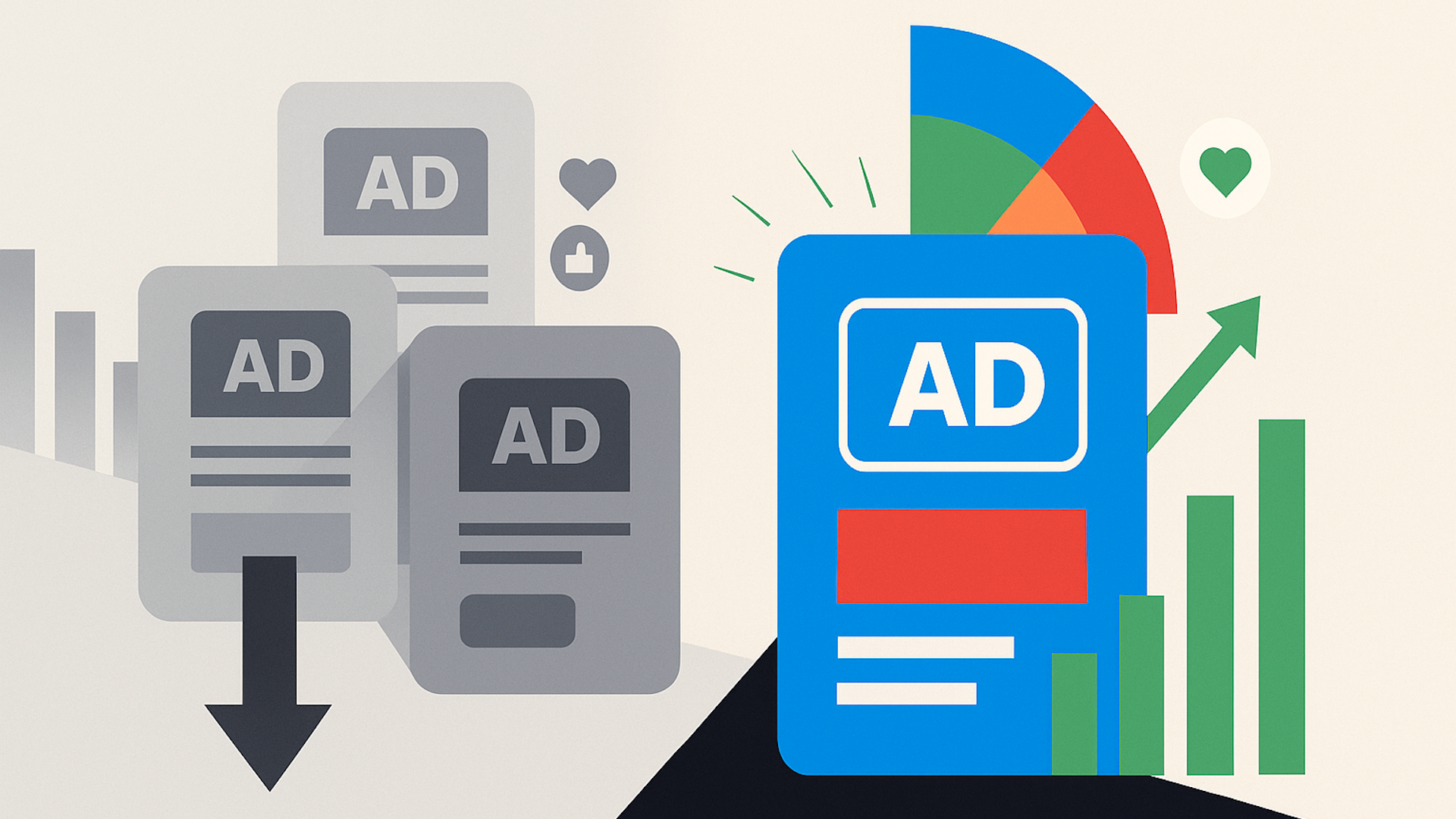
The death of an ad, like the end of the world, doesn’t happen with a bang but with a whimper.
If you’re paying attention, you’ll notice the warning signs: click-through rate (CTR) slips, engagement falls, and cost-per-click (CPC) creeps up.
If you’re not, one day your former top performer is suddenly costing you money.
Creative fatigue – the decline in ad performance caused by overexposure or audience saturation – is often the culprit.
It’s been around as long as advertising itself, but in an era where platforms control targeting, bidding, and even creative testing, it’s become one of the few variables marketers can still influence.
This article explains how to spot early signs of fatigue across PPC platforms before your ROI turns sour, and how to manually refresh your creative in the age of AI-driven optimization.
We’ll look at four key factors:
- Ad quality.
- Creative lifecycle.
- Audience saturation.
- Platform dynamics.
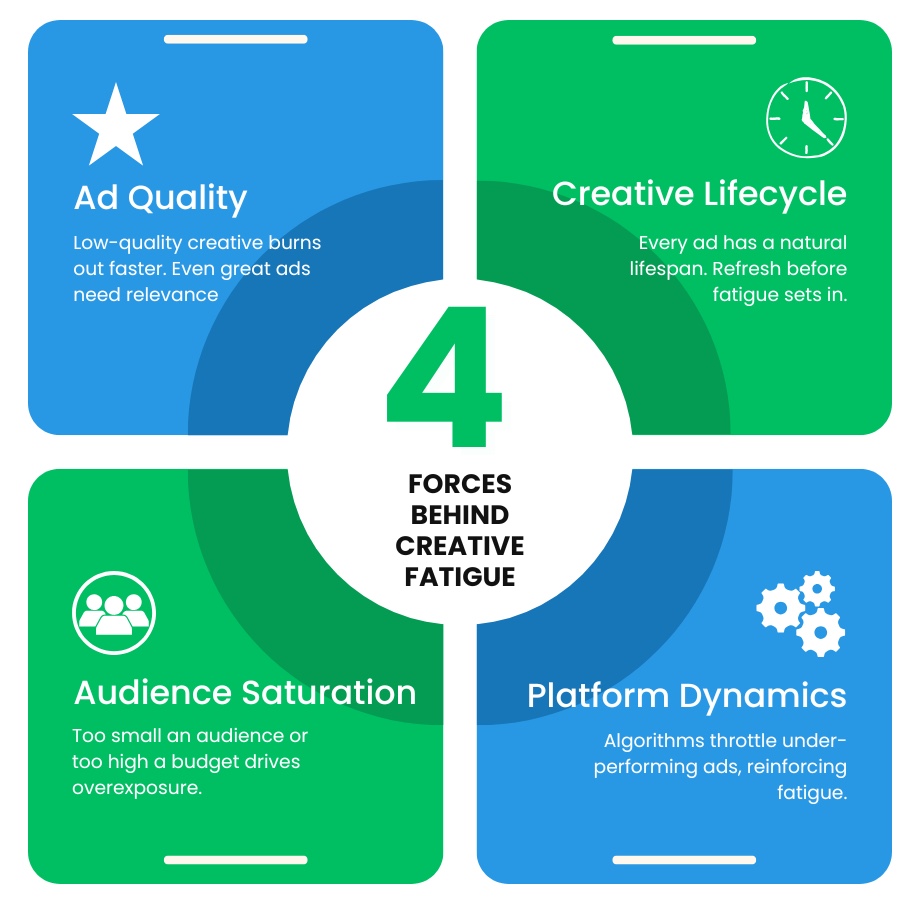
1. Ad quality
Low-quality ads burn out much faster than high-quality ones.
To stand the test of time, your creative needs to be both relevant and resonant – it has to connect with the viewer.
But it’s important to remember that creative fatigue isn’t the same as bad creative. Even a brilliant ad will wear out if it’s shown too often or for too long.
Think of it like a joke – no matter how good it is, it stops landing once the audience has heard it a dozen times.
The data behind ad quality
To track ad quality, monitor how your key metrics trend over time – especially CTR, CPC, and conversion rate (CVR).
A high initial CTR followed by a gradual decline usually signals a strong performer reaching the end of its natural run.
Because every campaign operates in a different context, it’s best to compare an ad’s results against your own historical benchmarks rather than rigid KPI targets.
Factor in elements like seasonality and placement to avoid overgeneralizing performance trends.
And to read the data accurately, make sure you’re analyzing results by creative ID, not just by campaign or ad set.
Dig deeper: How Google Ads’ AI tools fix creative bottlenecks, streamline asset creation
2. Creative lifecycle
Every ad has a natural lifespan – and every platform its own life expectancy.
No matter how timely or novel your ad was at launch, your audience will eventually acclimate to its visuals or message.
Keeping your creative fresh helps reset the clock on fatigue.
Refreshing doesn’t have to mean reinventing.
Sometimes a new headline, a different opening shot, or an updated call to action is enough to restore performance. (See the table below for rule-of-thumb refresh guidelines by platform.)
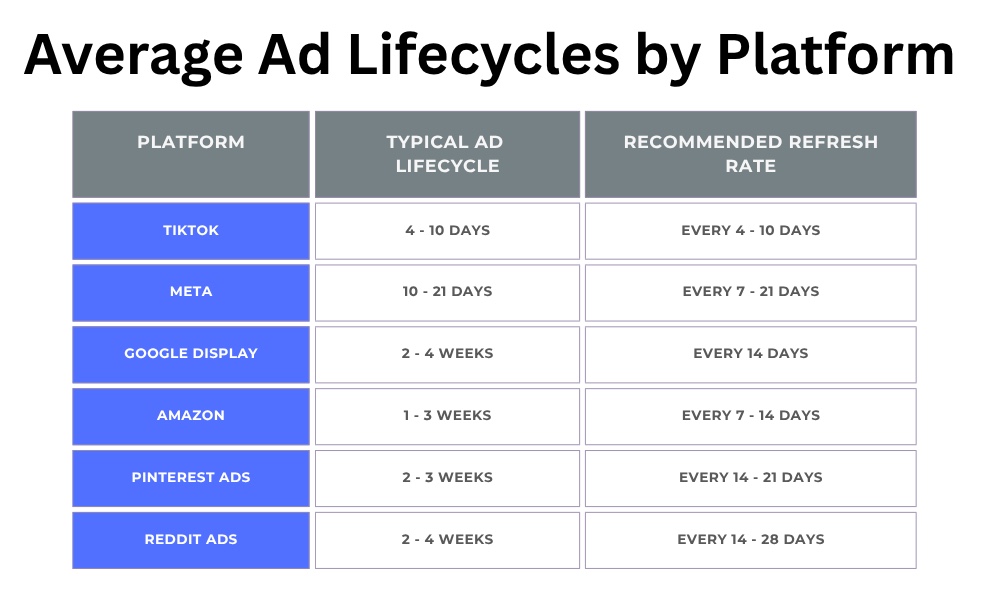
The data behind creative lifecycle
To distinguish a normal lifecycle from an accelerated one that signals deeper issues, track declining performance metrics like CTR and frequency – how many times a user sees your ad.
A high-performing ad typically follows a predictable curve.
Engagement drops about 20-30% week over week as it nears the end of its run. Any faster, and something else needs fixing.
Your refresh rate should also match your spend. Bigger budgets drive higher frequency, which naturally shortens a creative’s lifespan.
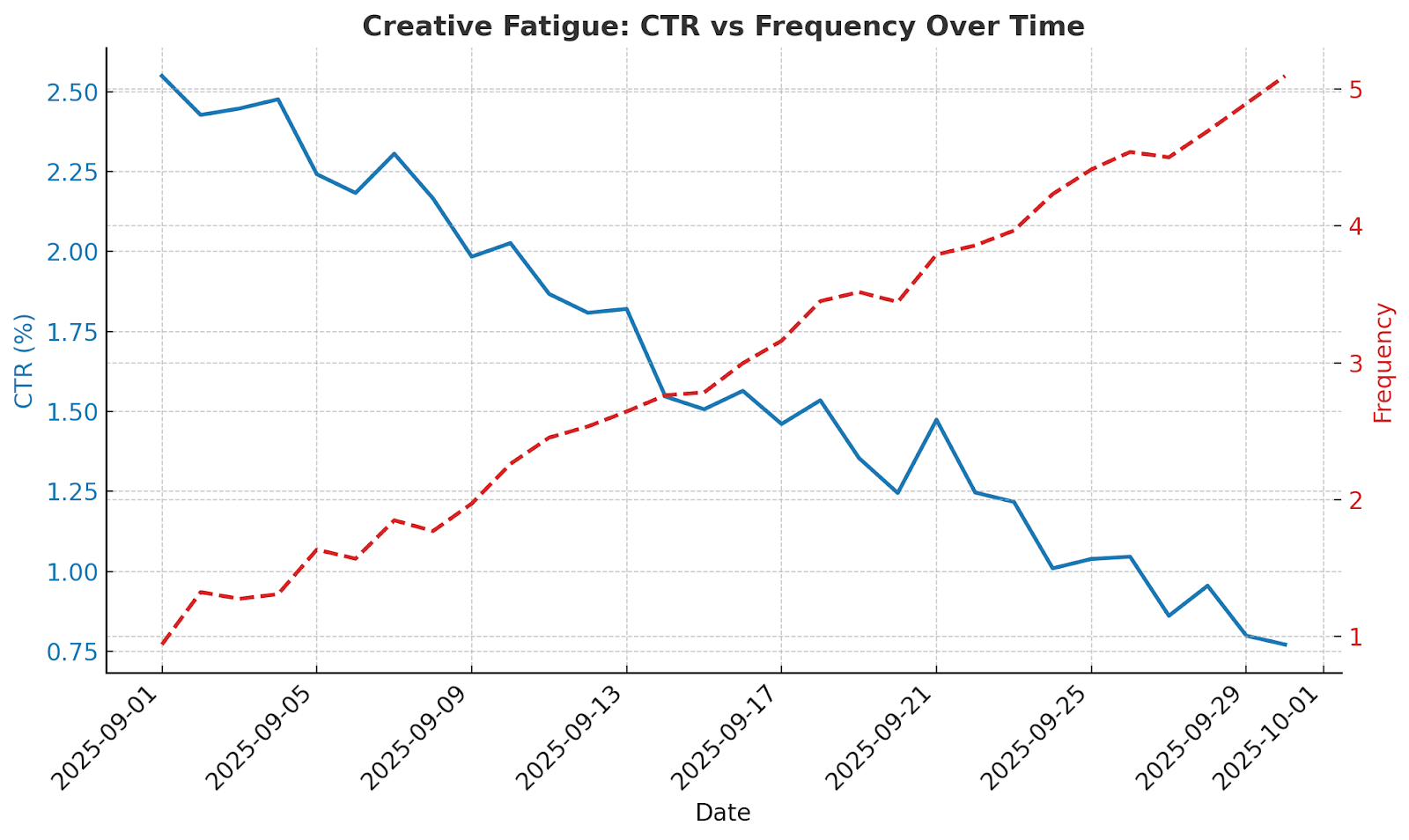
Get the newsletter search marketers rely on.
See terms.
3. Audience saturation
You’ve got your “cool ad” – engaging visuals, a catchy hook, and a refresh cadence all mapped out.
You put a big budget behind it, only to watch performance drop like a stone after a single day. Ouch.
You’re likely running into the third factor of creative fatigue: audience saturation – when the same people see your ad again and again, driving performance steadily downward.
Failing to balance budget and audience size leads even the strongest creative to overexposure and a shorter lifespan.
The data behind audience saturation
To spot early signs of saturation, track frequency, and reach together.
Frequency measures how many times each person sees your ad, while reach counts the number of unique people who’ve seen it.
When frequency rises but reach plateaus, your ad hits the same people repeatedly instead of expanding to new audiences.
Ideally, both numbers should climb in tandem.
Some platforms – including Google, Microsoft, LinkedIn, and DSP providers – offer frequency caps to control exposure.
Others, like Meta, Amazon, and TikTok, don’t.
Dig deeper: How to beat audience saturation in PPC: KPIs, methodology and case studies
4. Platform dynamics
These days, algorithms don’t just reflect performance – they shape it.
Once an ad starts to underperform, a feedback loop kicks in.
Automated systems reduce delivery, which further hurts performance, which leads to even less delivery.
How each platform evaluates creative health – and how quickly you respond before your ad is demoted – is the fourth and final factor in understanding creative fatigue.
The data behind platform dynamics
Every platform has its own system for grading creative performance, but the clearest sign of algorithmic demotion is declining impressions or spend despite stable budgets and targeting.
The tricky part is that this kind of underdelivery can look a lot like normal lifecycle decline or audience saturation. In reality, it’s often a machine-level penalty.
To spot it, monitor impression share and spend velocity week over week, at the creative level (not by campaign or ad set).
What to do when the algorithm punishes you
When impressions or spend drop despite a stable budget and consistent targeting, your ad has likely been demoted by the platform.
That doesn’t necessarily mean it’s poor quality.
This usually means the algorithm has lost “confidence” in its ability to achieve your chosen goal, such as engagement or conversions.
Here’s how to recover:
- Check your performance metrics: Sharp declines in CTR, engagement, or conversions can trigger a penalty. Compare the trend line to earlier in the campaign.
- Assess audience saturation: If frequency exceeds 3 for prospecting or 5 for retargeting, your audience may be too small for the budget. Broaden targeting or reduce spend.
- Refresh the creative: Launch new or updated versions under new ad IDs so the system re-enters its learning phase.
- Don’t make drastic edits: Frequent budget, bid, or targeting changes reset learning and slow recovery.
When the algorithm cools your ad, don’t panic.
Act quickly to identify whether the issue lies in quality, freshness, audience, or budget – and make deliberate adjustments, not hasty ones.
Turning creative fatigue into a performance signal
Creative fatigue, like death and taxes, is inevitable. Every ad has a beginning, middle, and end.
The key is recognizing those stages early through vigilant data monitoring, so you can extend performance instead of waiting for the crash.
While automation may be taking over much of marketing, ad creative, and copy remain one arena where humans still outperform machines.
Great marketers today don’t just make good ads. They know how to sustain them through smart refreshes, rotations, and timely retirements.
Because when you can see the whimper coming, you can make sure your next ad lands with a bang.
Dig deeper: 7 best AI ad creative tools, for beginners to pros


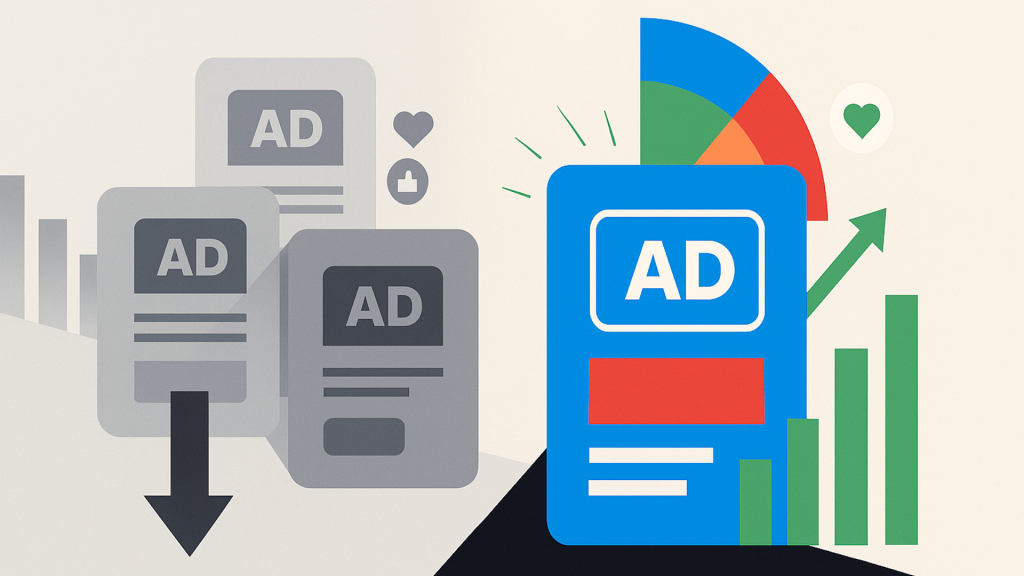




Recent Comments